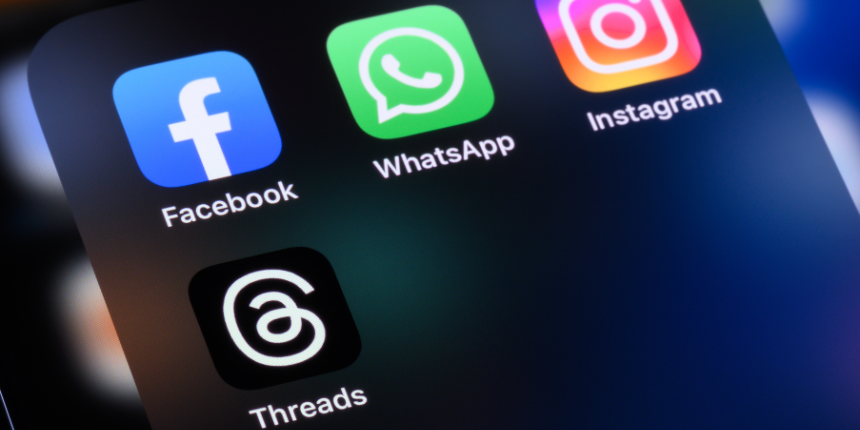
Amplify your reach and drive results with our tailored paid media strategies.

In part one of this three part series on using aligned digital media strategies to boost business objectives, I reviewed considerations for new customer acquisition via digital channels and tactics. While acquisition remains a top priority for marketers today, it is equally important to retain those customers once they’re acquired.
Customers dictate their relationships with brands
Social media, information sharing, a wealth of options and the relative ease of change means consumers are in the driver’s seat in brand-customer relationships. Because of this, customer churn is a significant problem faced by all industries. In fact more than 50% of all users say it only takes a single bad experience for them to switch brands.
So how can brands create a better digital strategy to reduce churn and keep customer retention high?
Persona and segmentation development are key elements to understanding your target audience. Beyond basic demographics, behavioral and psychographic inputs can create a more robust view of your audience. Some questions to consider include:
With questions like these as the foundation, marketers can identify media channels and placements that are most likely to resonate with their target audience. This should also inform the creative messaging that’s delivered. The overall goal is to speak to these customers in the way they like to be spoken to, in a way that is appropriate for the channel, at the time they need it.
Brands’ own customer data is an often-overlooked source of valuable information. Compiling is often the challenge, with data residing in multiple silos. Store Point of Sale information; Email response behaviors; Online Purchase frequency; Product or Category affinity; Lifetime Value… oftentimes these data points “belong to” and are stored within a single team or function. To compile all these data elements into a single source can be daunting, but can lead to invaluable customer insights once analyzed.
Once your business has a firm grasp on what a “good” or “high quality” customer looks like, targeting those audiences in your media buys will help you improve your overall customer mix—leading to a “stickier” customer with less churn.
A data management platform (DMP) can help to create granular segments for media targeting. For example, if you’ve identified certain characteristics and behaviors of a customer who stays with the company longer, spends more, and is a brand advocate, you can create a “premium” customer segment within your DMP and serve your media against that segment.
This type of audience targeting removes users unlikely to remain a good, loyal customers from the data pool, and allows you to spend your marketing dollars against a more desirable audience.
One thing to note as a consideration, however, is the potential for increased media cost in this type of targeting. For every third-party data layer added on (as an example, think: multiple car owner + affluent cohort + international traveler + post-grad education level) there is a cost associated. However, if the value of the better customer is truly worth it to the business, the additional cost of the media to acquire them should be effectively offset.
It should be noted that having your own DMP is not a requirement to target specific audience types; lookalike modeling is a tactic that is a proven performer in display prospecting, relying on the vendor’s DMP and modeling to find similar audiences. Audience targeting on social media platforms is also very robust, as users have self-selected their demographics, interests and behaviors. Google Similar Audiences also functions as a lookalike/prospecting avenue, without requiring a marketer to have their own DMP.
Within digital marketing, CRM can occasionally fall victim to the notion that it’s not much more than keeping a customer database up to date, primarily for the purpose of sending them emails. Email is an incredibly valuable, cost-effective tool; however, with the wealth of tactics available to digital marketers, we can leverage various other tactics to keep in contact with our customers, keep them engaged, and keep them loyal. Here are a couple ideas:
Subscribe to our monthly newsletter.
Reward your best “friends” with a special, personalized offer. It needn’t be as granular as a 1:1 level of personalization, but for that segment of users who will help spread the word on social, why not deliver them a unique offer, thanking them for their loyalty?
With extensions into Adwords paid search, YouTube and Gmail ads, this provides an opportunity to interact with your best customers in multiple ways on multiple channels. You can thank them for being a great customer as they’re engaged in a relevant video on YouTube, then provide them a special offer when they’re searching for your products or services, and see that offer reflected again in their inbox. This creates a compelling, recurring theme that the brand cares about them and appreciates them.
Last, but certainly not least, we come back to customer data. As you amass a wealth of data on your customers, a business intelligence team can pore through it to identify any triggers, characteristic behaviors, etc. that indicate a customer may be about to leave for another brand. With that amount of data, the TIMING of the messaging can then become equally as important as the message itself and the channel it’s deployed on. Imagine, as a customer, you’re considering trying a competitor because they’ve advertised an attractive introductory rate. If you then received a proactive communication from the incumbent brand offering you reasons to stay, that may help retain your loyalty because you received the right message at the right time.
Of course, there are no guaranteed methodologies to keep a customer for life, but by understanding who they are from their data, targeting the best possible new customers with media, and speaking to them with relevant messages and relevant channels and tactics at the right time, you will be one step closer to achieving improved churn rates.
Want to minimize customer churn across your digital ecosystem? Our integrated strategies can help. Get in touch with us today to get started!
Amplify your reach and drive results with our tailored paid media strategies.
Amplify your reach and drive results with our tailored paid media strategies.
Subscribe to our monthly newsletter.